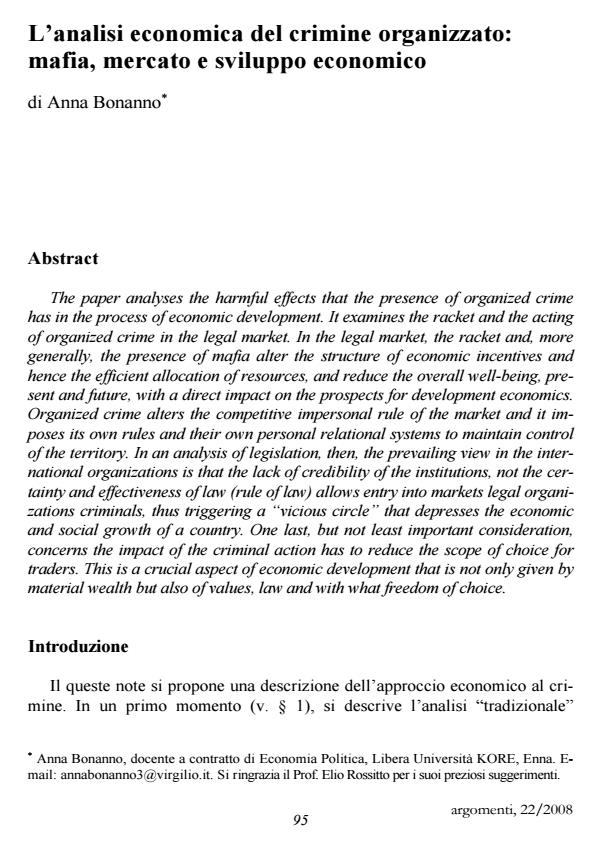L'analisi economica del crimine organizzato:
Journal title ARGOMENTI
Author/s Anna Bonanno
Publishing Year 2008 Issue 2008/22
Language Italian Pages 31 P. 95-125 File size 263 KB
DOI
DOI is like a bar code for intellectual property: to have more infomation
click here
Below, you can see the article first page
If you want to buy this article in PDF format, you can do it, following the instructions to buy download credits

FrancoAngeli is member of Publishers International Linking Association, Inc (PILA), a not-for-profit association which run the CrossRef service enabling links to and from online scholarly content.
L'analisi economica del crimine organizzato ABSTRACT: The paper analyses the harmful effects that the presence of organized crime has in the process of economic development. It examines the racket and the acting of organized crime in the legal market. In the legal market, the racket and, more generally, the presence of mafia alter the structure of economic incentives and hence the efficient allocation of resources, and reduce the overall well-being, present and future, with a direct impact on the prospects for development economics. Organized crime alters the competitive impersonal rule of the market and it imposes its own rules and their own personal relational systems to maintain control of the territory. In an analysis of legislation, then, the prevailing view in the international organizations is that the lack of credibility of the institutions, not the certainty and effectiveness of law (rule of law) allows entry into markets legal organizations criminals, thus triggering a vicious circle that depresses the economic and social growth of a country. One last, but not least important consideration, concerns the impact of the criminal action has to reduce the scope of choice for traders. This is a crucial aspect of economic development that is not only given by material wealth but also of values, law and with what freedom of choice.
Anna Bonanno, L'analisi economica del crimine organizzato: in "ARGOMENTI" 22/2008, pp 95-125, DOI: